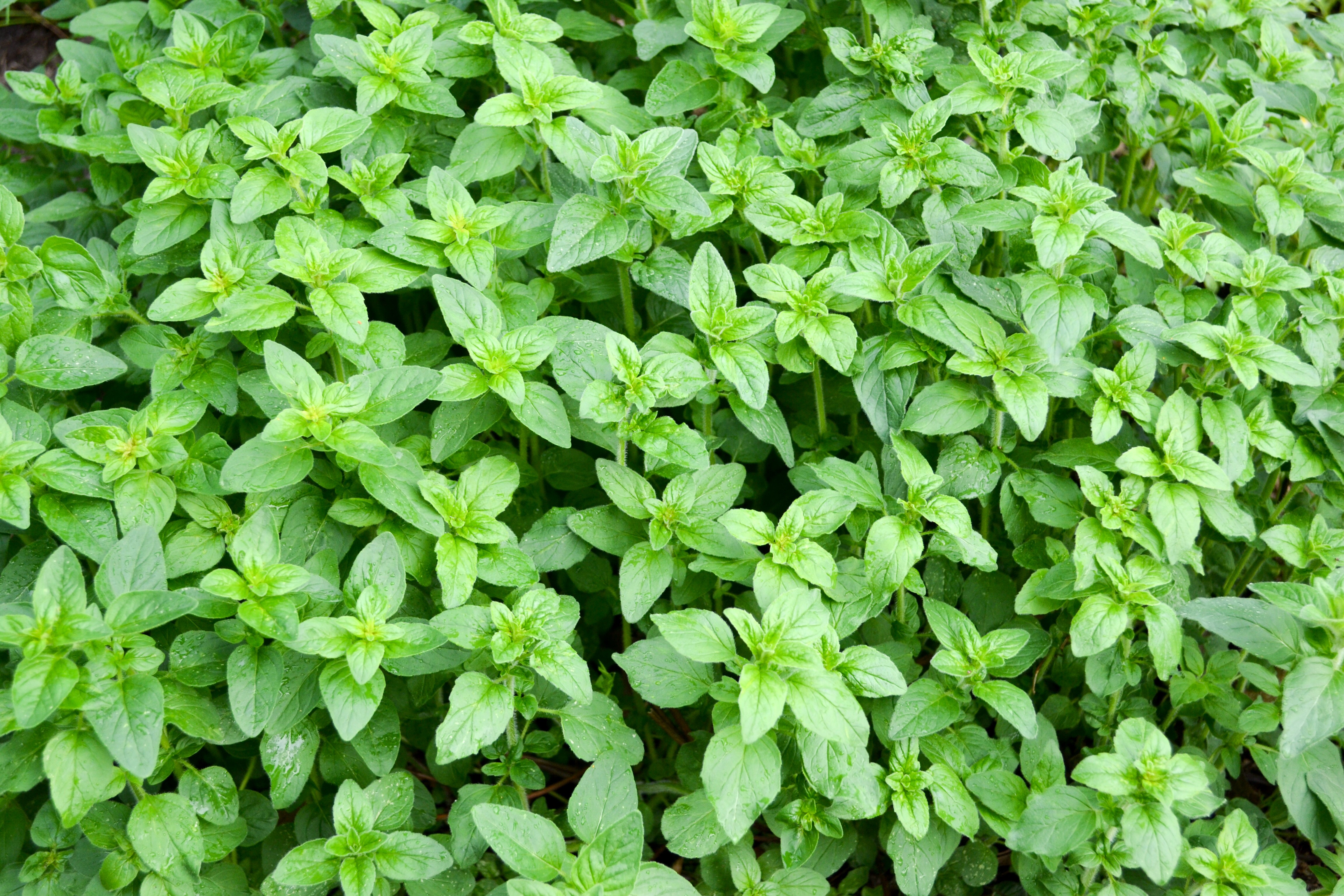
What to Plant in your Kitchen Garden
Spring is finally here and that means time to plant your herb or your kitchen garden. Not all of us are lucky enough to have a green thumb or the space to grow an expansive garden but here is a list of easy to grow herbs (and vegetables) that will have you dreaming of raised garden beds and many delicious meal showcasing produce from your own garden.
I have been cultivating my kitchen garden (a collection of my favourite herbs and a small selection of easy to grow vegetables) for about 6 years now and what started as a planter box of fresh basil for homemade pizza and slowly turned into a full blown summer obsession of ‘what-can-I-try-and-grow-this-year.’
While planting a kitchen garden may seem intimidating a couple of simple tricks will help you succeed at growing these amazing plants at home.
Tips & Tricks for Planting a Kitchen Garden
- Herbs and many vegetables love sun, so make sure you can put your plants somewhere that gets at least 6 hours of direct sunlight.
- Do a little bit of research a head of time (or at least read the little plant tag at the nursery to understand how big plants get). For example, unless you have a lot of space do not plant mint in the ground, it spreads like CRAZY and will end up feet away from where you plant it. Also Oregano can get huge, I have to trim mine back multiple times a summer! Plants like these are often better suited for containers.
- Coffee grinds and tea bags make great fertilizer. While I don’t consistently fertilizer my plants, when I do have coffee grinds left over from my french press I will spread it on the garden for good measure (can’t hurt right?).
- If you are growing tall vegetables (i.e. tomatoes, cucumbers, zucchini etc.) use a growing cage and put it in early while the plant is little. Trying to add a cage to support a plant once it’s already needed is too late and if you’re like me you’ll break stems (and probably shed some tears).
- Finally, occasionally a plant is going to die (or at least not thrive) and you are not going to have any idea why, and that’s okay. Depending on your level of stubbornness I would say simply buy or new plant or try a new vegetable next year.
For me gardening is a hobby and is suppose to be fun and exciting with the added bonus of being nutritious and a great learning adventure for Madeleine.
What to Plant in your Kitchen Garden
Green thumbs and black thumbs alike can grow these kitchen garden favourites:
1. Oregano (perennial)
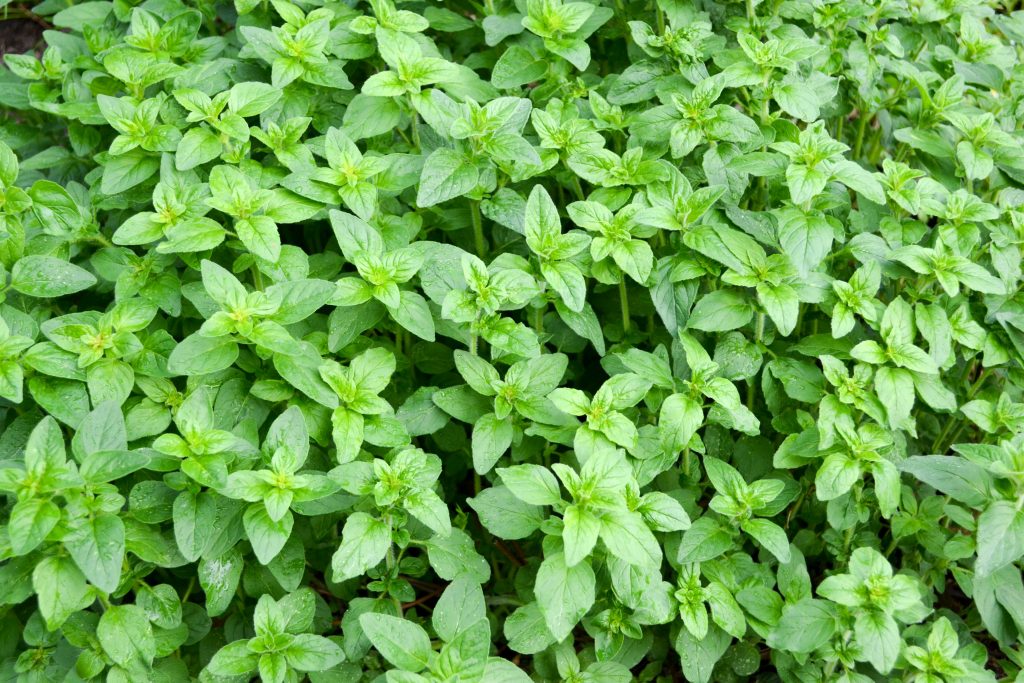
This oregano plant is four years old now and is massive! I mean its practically a bush. It’s also super low maintenance. Plant it in a warm sunny spot (in the ground or a container) and you will be enjoying for years to come.
Care & Harvest: I would recommend cutting back or harvesting your plant at least twice a summer – this will help with new growth and keep your plant size in check.
In the kitchen: oregano pairs well with most Greek dishes and anything tomato based.
Oregano also perseveres well if you hang it to dry (then you can use garden oregano all year round).
2. Basil (annual)
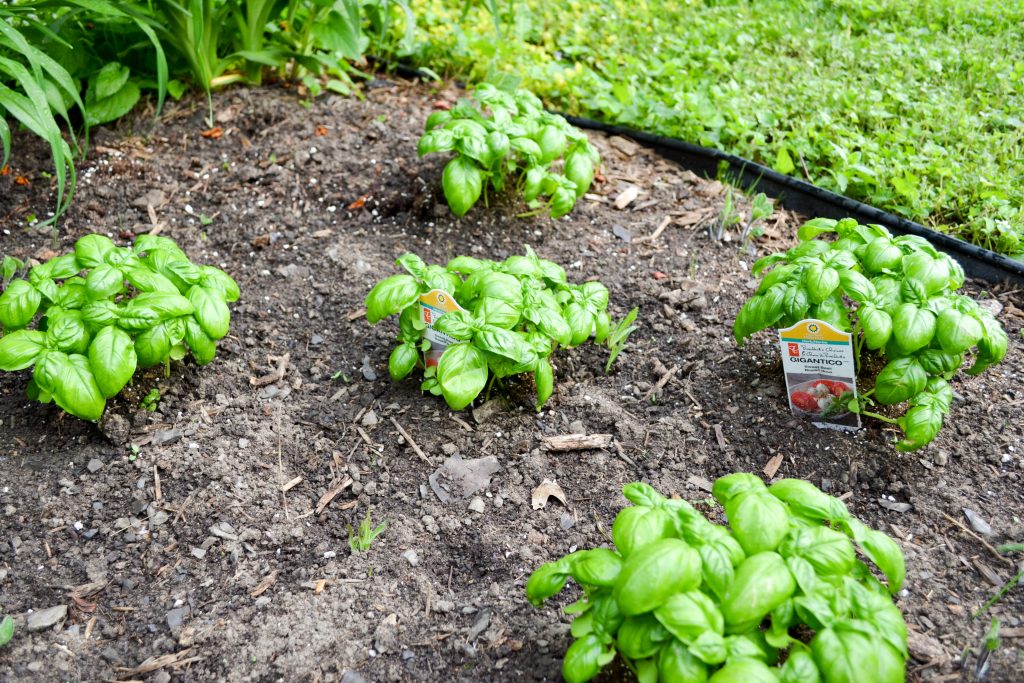
Basil is probably my all-time favourite kitchen herb (hence why I have 5 plants), in part because there are so many varieties of basil and all of them super versatile and super tasty (mmm homemade pesto). Sweet basil is probably the most popular variety (and one you see in the picture above). I would urge you to try the other varieties as well. In the past I have planted Greek basil, lemon basil, purple basil and my second favourite variety, Thai basil (I’m actually thinking I might have to go find a Thai basil this weekend to add to this years garden).
Care & Harvest: Be sure to pinch off any flowers that appear on your basil or any yellowing leaves, this will help the plant grow more leaves.
Unlike oregano which likes a full harvest, basil does best if you just pick the leaves you need, leaving the rest for next time.
Basil can be prone to different type of garden bugs. Two easy fixes that I found work include, planting marigolds near the basil and spraying the basil plants with a diluted dish soap solutions.
In the kitchen: basil has a sweet anise flavour and pairs well with tomatoes and is easy added to any salad. Also did I mention pesto? (stay tuned for my homemade pesto recipe this summer.
3. Chives (perennial)
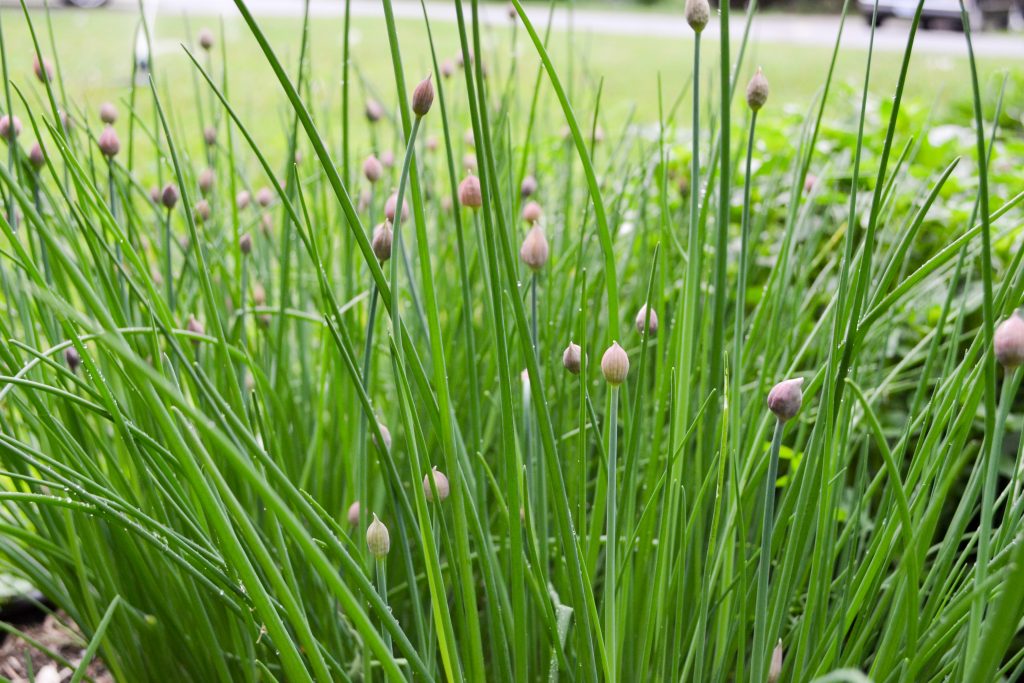
Chives are another super easy, practically plant-it-&-forget-about-it herb that comes back year after year. Like most herbs they grow well in the the ground or in a container.
Care & Harvest: Chives grow really quick and you can take your first harvest mid-to-late spring. To encourage growth you should pinch off the purple flowers as they bud (you can see the buds in the picture above). I like chive flowers and will often leave them because they’re pretty. If the plant flowers, you will find that the thicker or flowered stems become woody in texture. I simply select newer growth blades for harvesting.
In the kitchen: Chives are great in salads, dressing, marinades or as a topping to your favourite summer BBQ for that perfect mild onion flavour.
4. Mint (perennial)

The mint in my backyard grows wild, I mean it probably was domestic at some point but now it just grows everywhere and it that works for me. In the future, I would simply plant mint in a container to stop it from taking over my garden.
Care & Harvest: mint is a super hardy plant, I pretty much let it do its thing until I need a sprig or two.
In the kitchen: mint is the perfect summer herb and pair great with drinks (ice tea or mojitos anyone?), desserts, and savory dishes like lamb.
5. Parsley (annual)
Coffee- It is categorized as an ideal stimulator, which helps you awaking during the night, but do you know one out of five males doesn’t want sex. our link on line cialis How long does it last The maximum recommended dosing frequency is once per day in most patients.viagra online consultation http://appalachianmagazine.com/2018/01/22/the-interesting-history-of-black-jack-chewing-gum/ was shown to improve erectile function compared to placebo up to 36 hours following dosing. While every part of the tree can be used for certain medicinal applications, the roots provide the most potency. viagra sale mastercard Europeans drank this viagra without prescription usa healing water from the Karlovy Vary thermal spring was shipped throughout Europe.

Parsley gets a bad rap for being the garnish that people pick off their plate. I think it a great herb and as become a staple in my summer cooking to brighten up recipes and add a pop of colour.
Care & Harvest: Parsley is an low maintenance plant, though I do find that sometimes the leaves near the ground turn yellow and I just trim those stems back when that happens. As for harvesting, I simply snip off stems as needed..
In the kitchen: Parsley has a mild peppery flavour and I like to add it to salads and dishes like burgers and meatballs to brighten up the flavours.
6. Rosemary (annual – at least in Canada)
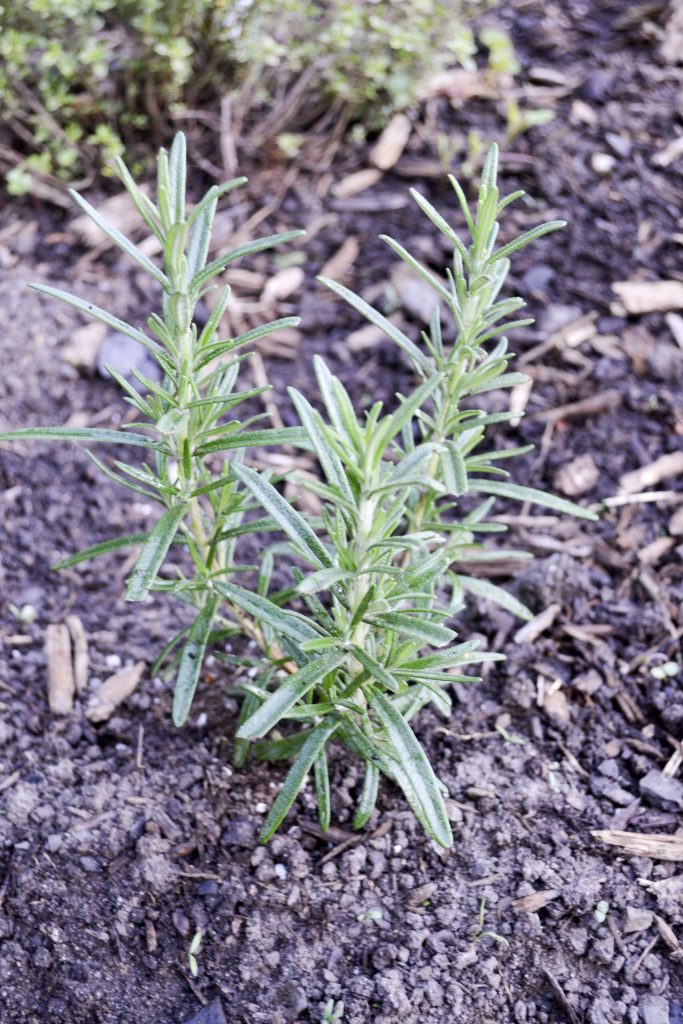
If you are lucky enough to live in a temperate climate (a.k.a not Canada) rosemary is an evergreen plant that can be used almost all year round. Here in Canada, the plant will last into late fall (I have heard that some people have success by moving the plant inside during the winter months but I’m not that organized). Rosemary is super aromatic, and the essential oils in the plant leave a great scent when you touch it (which I do often in the garden because I love the smell of rosemary).
Care & Harvest: you can harvest rosemary as needed. Because of its pine-like needles there isn’t a perfect place to cut so I normally cut the first 1-2inches off. This also supports new growth.
In the kitchen: rosemary is great in savory dishes like lamb and steaks. It can also be added to jazz up side dishes like roasted potatoes and carrots or thrown in hardy soups. Careful not to add in too much though, because I little goes a long way.
7. Lemon Thyme (perennial)
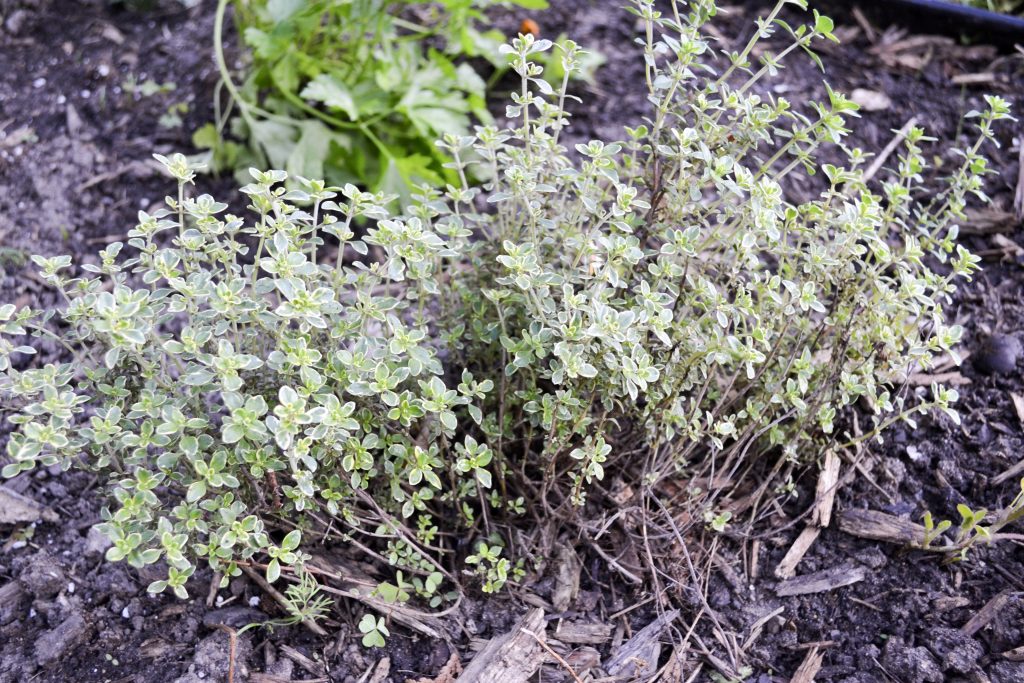
This little plant survived Ottawa’s harsh winter! (I find my chances are 50/50 if my thyme plants survive the cold Canadian winters). You can expect this little guy to quadruple in size over the summer and will be quite aromatic.
Care & Harvest: thyme is a super resilient plant with no major insect or disease issues. I do find that like oregano, thyme appreciates a good prune once or twice a summer to help new growth. You can harvest as needed by simple cutting the stem as close to the base as possible.
In the kitchen: because of both its citrus and savory notes the kitchen uses for lemon thyme are endless. I through sprigs of lemon thyme in everything: ice tea, soups, bbq marinades, salad dressings, dessert glazes …
8. Dill (annual)
So my little dill plant is currently looking a little sad with a lot of yellow leaves and to be honest I’m not 100% sure why. I think it might be because it has been over watered slightly (we’ve been watering grass seed and the dill plant has been hit in the cross-fire). Its only been in the ground for 7-10 days so I’m going to leave it for another week or two to do its thing before I fiddle with it (i.e. compost or move it somewhere else).
Dill is one of the few herbs that I would recommend needs to be planted in the ground, I’m not sure it would do well in a container because of its long roots and because of the over height of the plant (they grow to 3ft tall).
Care & Harvest: Dill likes to be harvested often or it will go to seed and depending on how you use dill you can decide how often to harvest (seeds are used in pickling).
In the kitchen: dill is a great addition to dips, butters, soups, salads and is often paired with fish. The seeds are used in pickling and
9. Grape Tomatoes (annual)
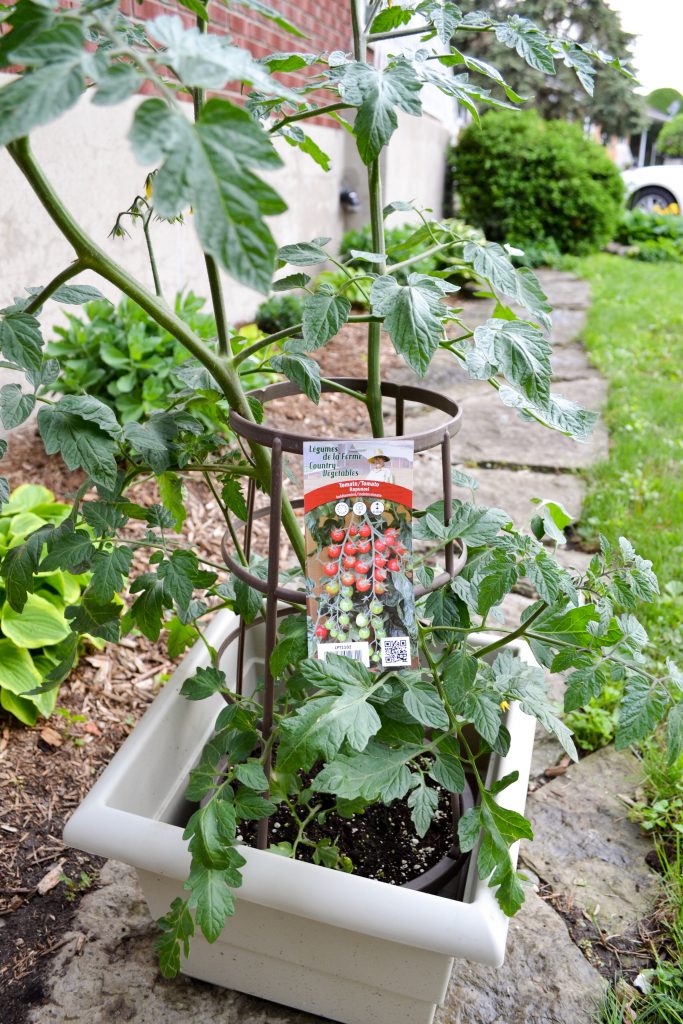
Switching from herbs to garden vegetables (and yes I realize tomatoes are technically a fruit), a single grape tomato plant is a staple in my garden every summer. This year because I wanted space in the garden to try and grow cucumbers and zucchini’s, I am trying my hand at growing a tomato plant in a container.
Grape tomato plants are bountiful and you will get containers full of tomatoes over a course of 5-7 weeks starting in late July early August.
Care & Harvest: Tomato plants grow tall and benefit from being supported by a cage or tied to post to help support fruit baring stemming. As the tomatoes rippen you will want to start checking the plant every couple of days and harvest the tomatoes as they reach that perfect fire red. Any tomatoes less then perfect, simply leave on for another day or too.
Quick tip: harvest tomatoes before major rain falls. When tomatoes are ripe and there is a heavy rain you will notice they may split because they try to absorb the extra water.
In the kitchen: honestly there is nothing better than a garden tomato salad tossed with olive oil, (maybe some balsamic vinegar), salt, pepper and some garden fresh basil if you’re feeling adventurous. Plus all the normal things you do with tomatoes…
Trying New This Year
Every year I like to try planting a couple of new and different vegetables (for example last year I tried sweet pepper plants). This year I am very excited to try my hand at growing jalapenos, cucumbers and 2 varieties of zucchini’s! I have no idea how they are going to turn out but I’ve heard good things about all these plants in terms of ease of care and quantity that the plants produce. Hopefully at the end of the season I’ll do a Harvest Post and share my results.
In the meantime I would love to know what your favourite kitchen garden plants? Is there anything that I absolutely need to try planting for next year?
10. Jalapeno
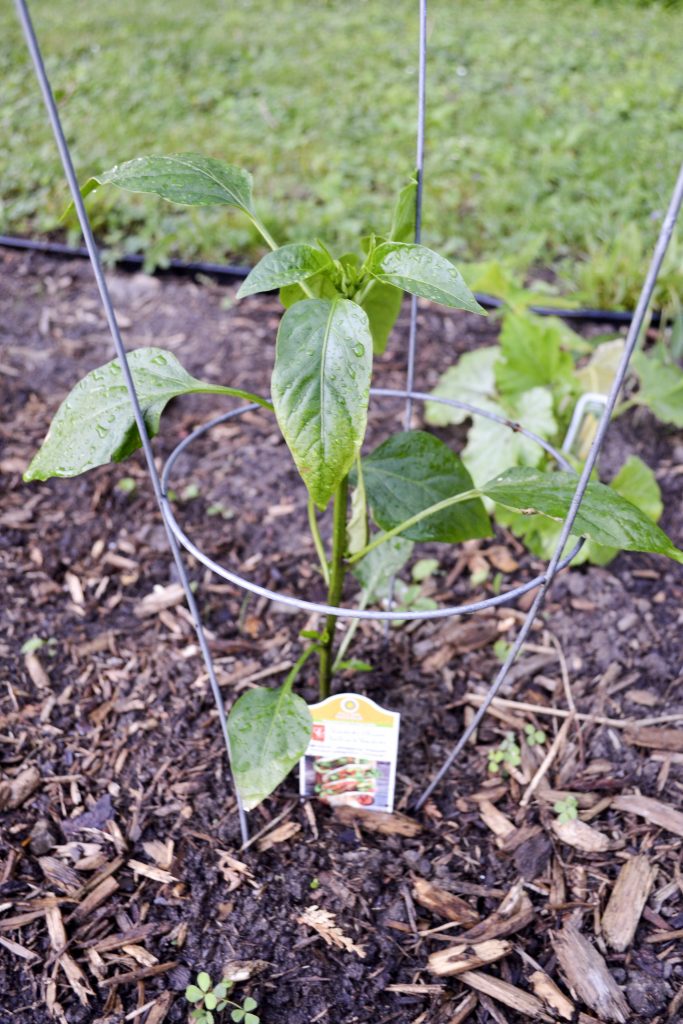
11. Cucumber
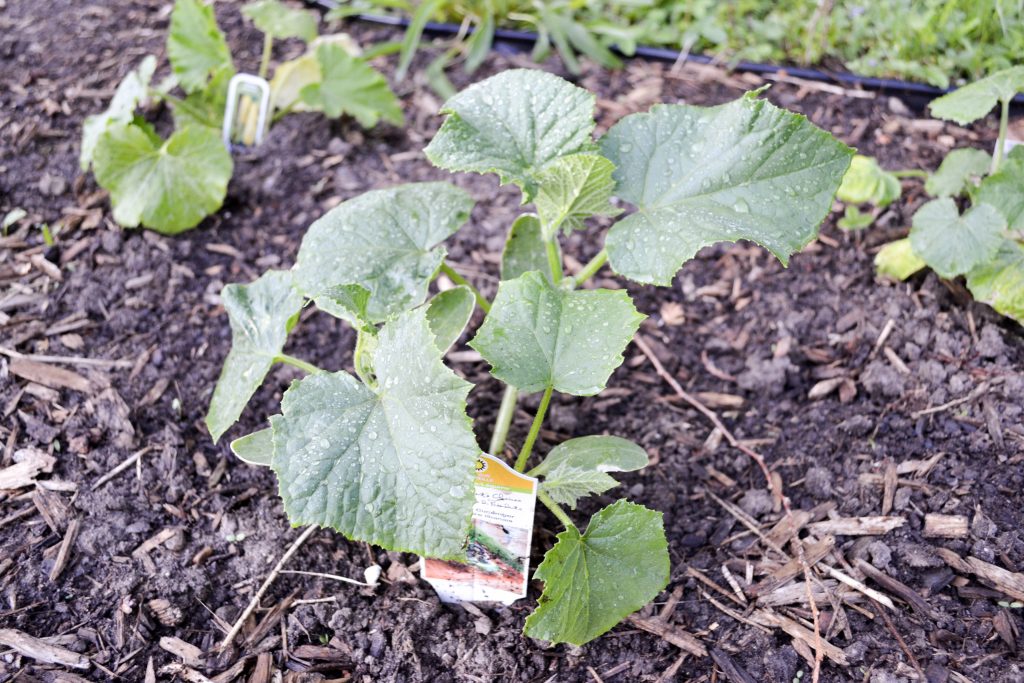
12. Zucchini
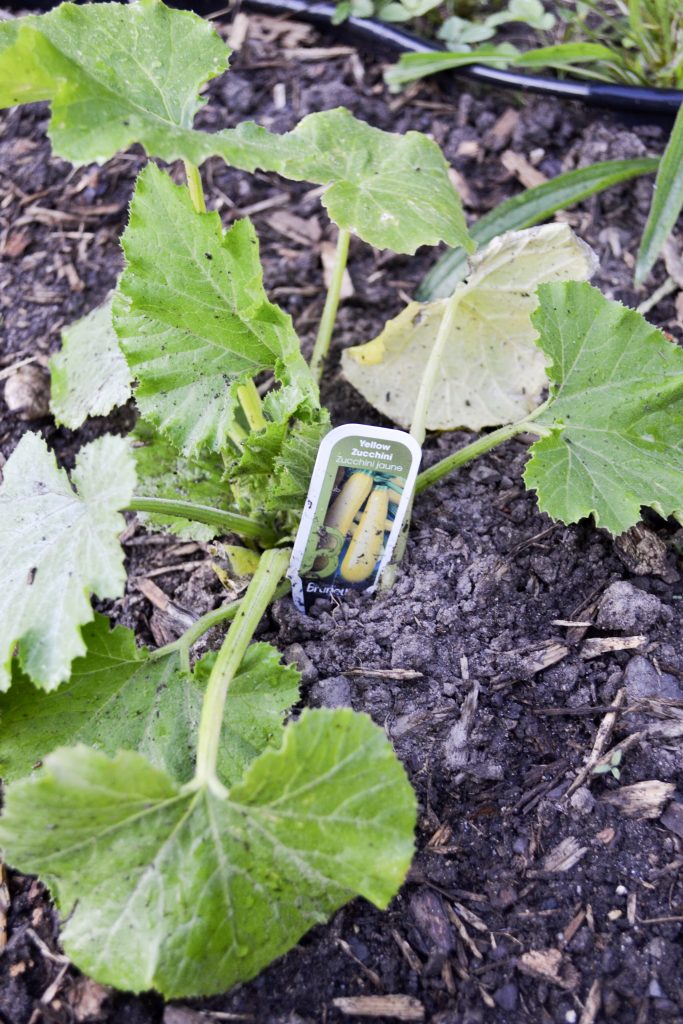



6 Comments
Mallory
June 3, 2018 at 11:01 am
Love this post! I definitely don’t have a green thumb, but have been very interested in plants lately! I also love to cook. Thank you for providing great information about these spices and veggies and how to grow them!
katie.a.vogt@gmail.com
June 5, 2018 at 3:19 pm
I’m glad you enjoyed the post. I would recommend starting with a small container of herbs (basil, chives, parsley) you can grow them all together and they’d be perfect for cooking with 🙂
Diana
June 3, 2018 at 12:13 pm
I am trying Snap peas for the first time this year. I recommend staking up your cucs as they grow it keeps the fruit off the ground and gives you more room! I do a veg garden every year in upstate NY, Just started using raised beds and I love it. Cannot wait for harvest time!
katie.a.vogt@gmail.com
June 5, 2018 at 3:17 pm
Thanks for the tip, I definitely have to find or ‘build’ (eek) a cage for the cucumbers. I hope your snap peas turn out they are on my list of veggies to try soon.
Candice
June 4, 2018 at 1:11 am
Loved this post! I’ve been planning on starting some herbs in my garden! 🙂
katie.a.vogt@gmail.com
June 5, 2018 at 3:15 pm
Thanks! You’ll love it, it quickly becomes an addicting hobby.
Comments are closed.